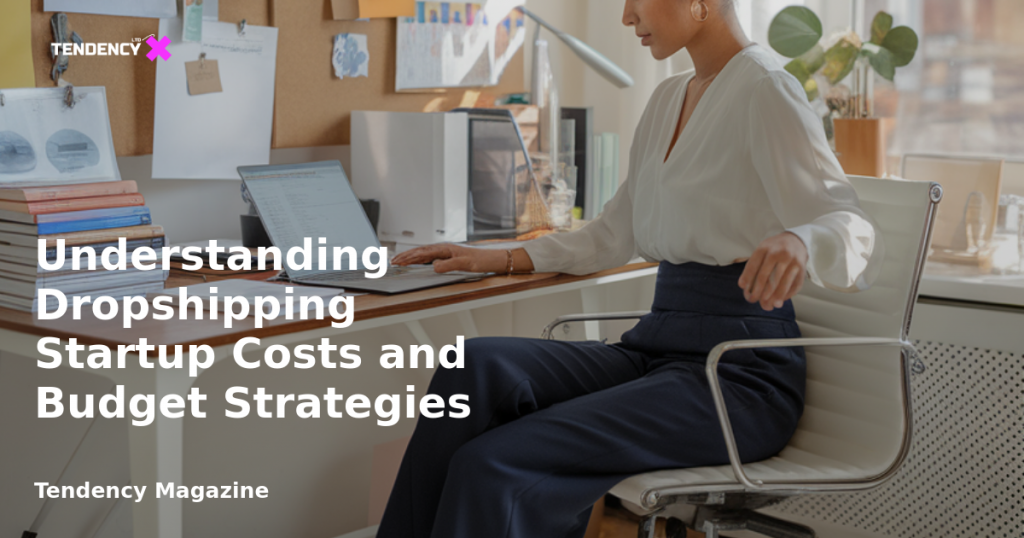Understanding Dropshipping Startup Costs and Budget Strategies

Table of Contents
- Breakdown of Dropshipping Startup Costs
- Website and Ecommerce Store Setup
- Business Registration and Licensing
- Product Samples
- Marketing and Advertising Costs
- Dropshipping Tools and Integrations
- Supplier Fees and Product Costs
- Shipping Costs and Fulfillment
- Taxes and Compliance
- How Much Does It Cost to Start Dropshipping with Shopify?
- Tips for Starting a Dropshipping Business on a Budget
- Start Small with Ads
- Focus on Organic Dropshipping
- Pick a Profitable Niche
- Use Free Tools and Trials
- How Much Does It Cost to Start Dropshipping FAQ
Breakdown of Dropshipping Startup Costs
Website and Ecommerce Store Setup
Setting up your ecommerce store is a foundational step in launching your dropshipping business. Shopify is a popular choice for many entrepreneurs due to its user-friendly interface and comprehensive suite of tools designed for online retail. The basic Shopify plan costs approximately £23 per month (when paid annually) and includes features such as unlimited product listings and integration with major dropshipping apps. Additionally, you will need to purchase a custom domain, which typically costs around £13 annually, unless you opt for the free “.myshopify.com” domain.
Business Registration and Licensing
Depending on your location, you may need to register your business or obtain a business license. Business registration fees can range from £40 to £400, varying by location and business structure. Establishing a legal entity like an LLC can provide benefits such as personal asset protection and enhanced credibility with customers.
Product Samples
Ordering product samples is a critical step to ensure product quality and assess shipping times. The cost of product samples can vary based on the supplier, product type, and shipping method. Typically, sample orders, including shipping, range from £40 to £80. Testing products before selling them helps avoid potential issues with quality and delivery times.
Marketing and Advertising Costs
Marketing is essential for driving traffic and sales. Many dropshippers start with paid advertisements on platforms like Facebook, Instagram, or Google, with initial budgets ranging from £80 to £160 per month. Additionally, influencer marketing can be an effective strategy, with costs varying based on the influencer’s reach and engagement. Email marketing platforms also play a crucial role in customer retention and engagement, with costs typically ranging from £16 to £40 per month as your subscriber list grows.
Dropshipping Tools and Integrations
Utilizing dropshipping tools and integrations can streamline operations and enhance efficiency. Shopify offers various apps that connect your store to suppliers, automate order fulfillment, and update pricing. While many tools offer free trials, expect to pay around £16 to £40 per month as your business scales.
Supplier Fees and Product Costs
Most dropshipping suppliers do not charge upfront fees, but the per-item cost is generally higher than traditional wholesale pricing. Some suppliers may also charge a small dropship fee per order. Understanding these costs is essential for setting profitable pricing strategies.
Shipping Costs and Fulfillment
Deciding whether to absorb shipping costs or pass them on to customers is a strategic decision. Offering free shipping can be a strong incentive for buyers, but it also increases your expenses. Shipping costs can vary significantly based on product weight and destination, with options like ePacket or DHL offering faster delivery at higher costs.
Taxes and Compliance
Compliance with sales tax regulations is vital, and tools like TaxJar or Avalara can automate the process for a monthly fee. Additionally, staying informed about tariff policies and setting aside funds for income tax are important considerations as your business grows.
How Much Does It Cost to Start Dropshipping with Shopify?
Starting a dropshipping business with Shopify can cost between £160 to £480 monthly, depending on the tools and marketing strategies you choose. This estimate includes the Shopify subscription, domain registration, access to dropshipping apps, and initial marketing expenses.
Tips for Starting a Dropshipping Business on a Budget
Start Small with Ads
If you plan to use paid ads, begin with a modest budget, testing different creatives and targeting strategies. As you identify successful approaches, gradually increase your ad spend to maximize returns.
Focus on Organic Dropshipping
Organic traffic strategies, such as creating content for social media platforms like TikTok and Instagram, can drive free traffic to your store. Additionally, optimizing your site for search engines can enhance visibility without incurring advertising costs.
Pick a Profitable Niche
Choosing a niche allows you to target a specific audience and tailor your marketing efforts accordingly. This approach can improve customer engagement and increase the likelihood of success.
Use Free Tools and Trials
Take advantage of free trials offered by ecommerce platforms and dropshipping tools. Utilize free SEO tools, image editors, and email platforms to minimize startup costs while testing your business model.
How Much Does It Cost to Start Dropshipping FAQ
How much money should you have to start dropshipping?
A realistic starting point is £160 to £240 in your first month, covering store setup, product sourcing, marketing, and essential tools.
Is dropshipping 100% profitable?
No business model guarantees 100% profitability. However, with effective strategies and pricing, a dropshipping store can become highly profitable over time.
How do dropshippers get paid?
When a customer purchases from your store, the payment is deposited into your account. You then pay your supplier for the product, retaining the difference after deducting costs.
Which site is best for dropshipping?
Shopify is widely regarded as one of the best platforms for beginners due to its ease of use, comprehensive features, and integration with dropshipping apps.
In conclusion, while dropshipping offers a low-risk entry into ecommerce, understanding and managing the associated costs is vital for success. By carefully planning your budget and leveraging available tools and resources, you can build a profitable dropshipping business.
2025 Tendency LTD. All rights reserved.

